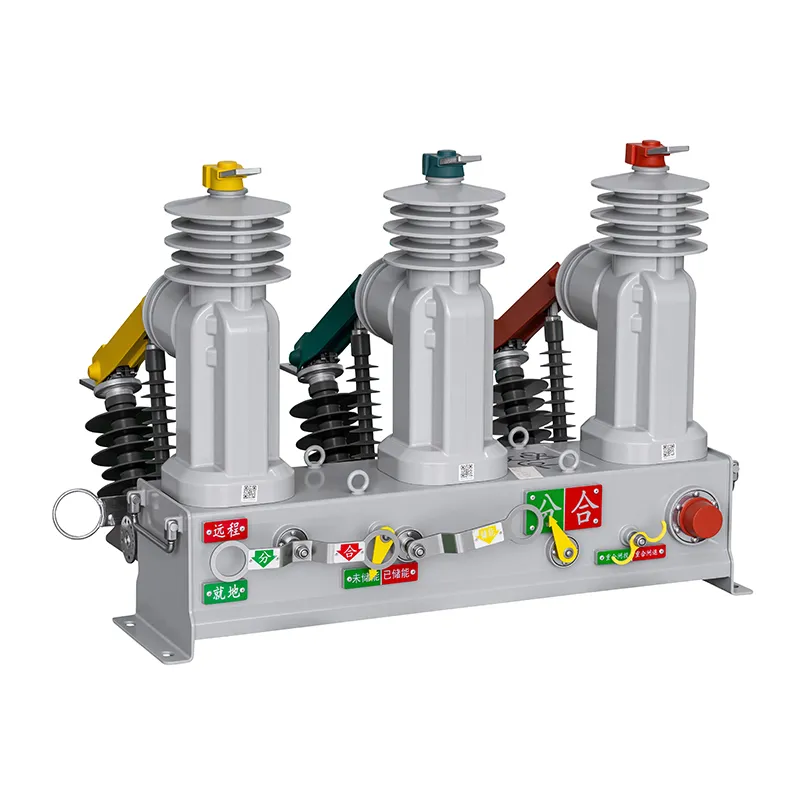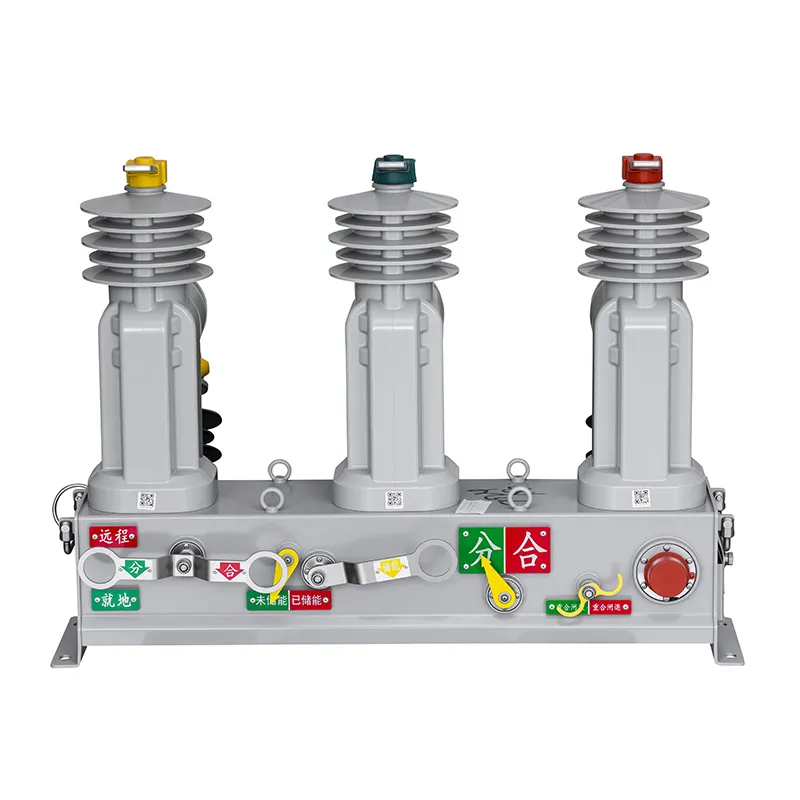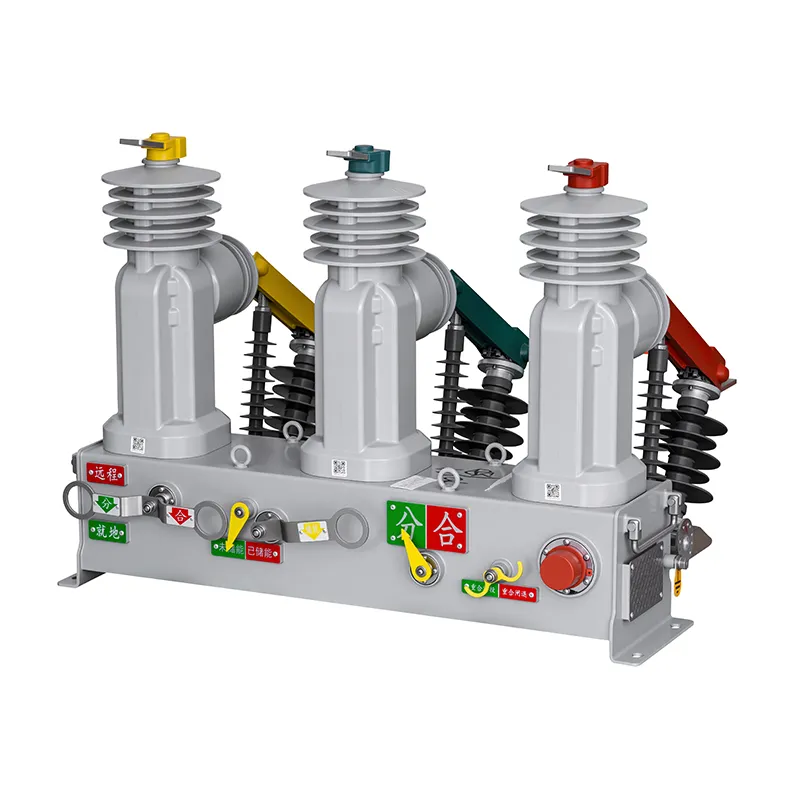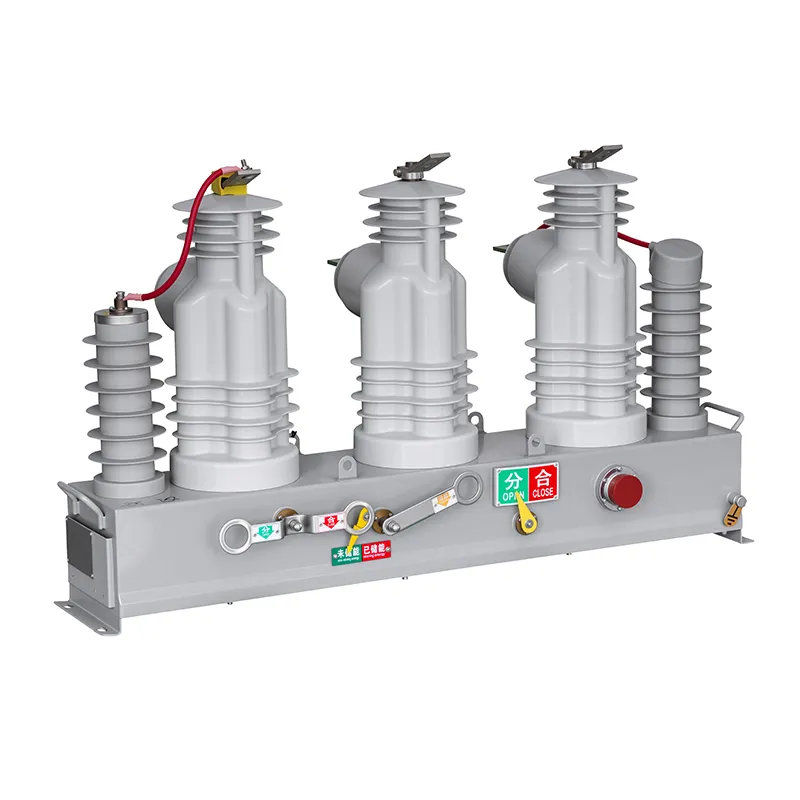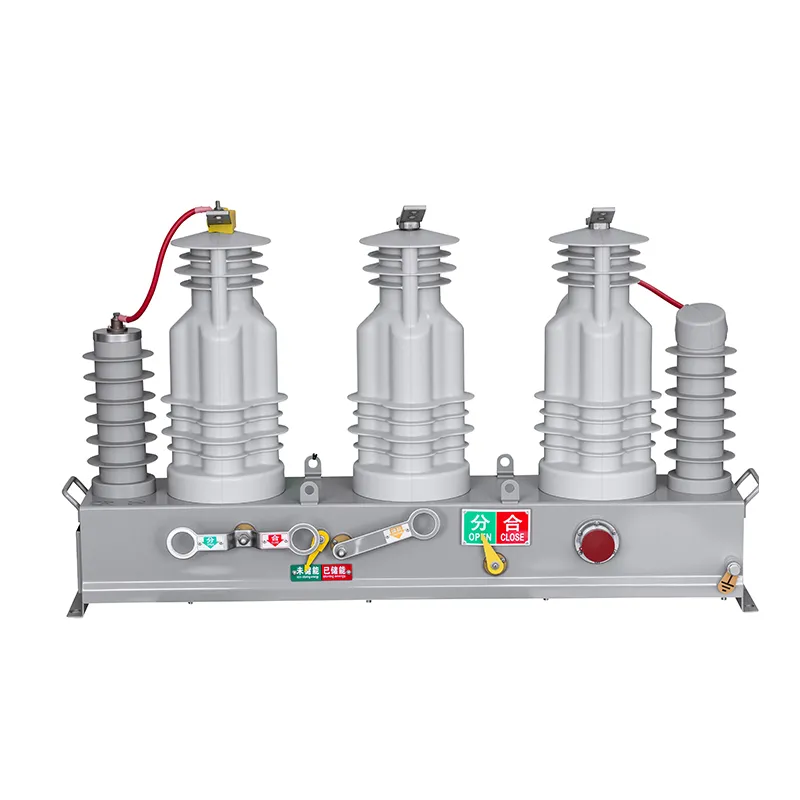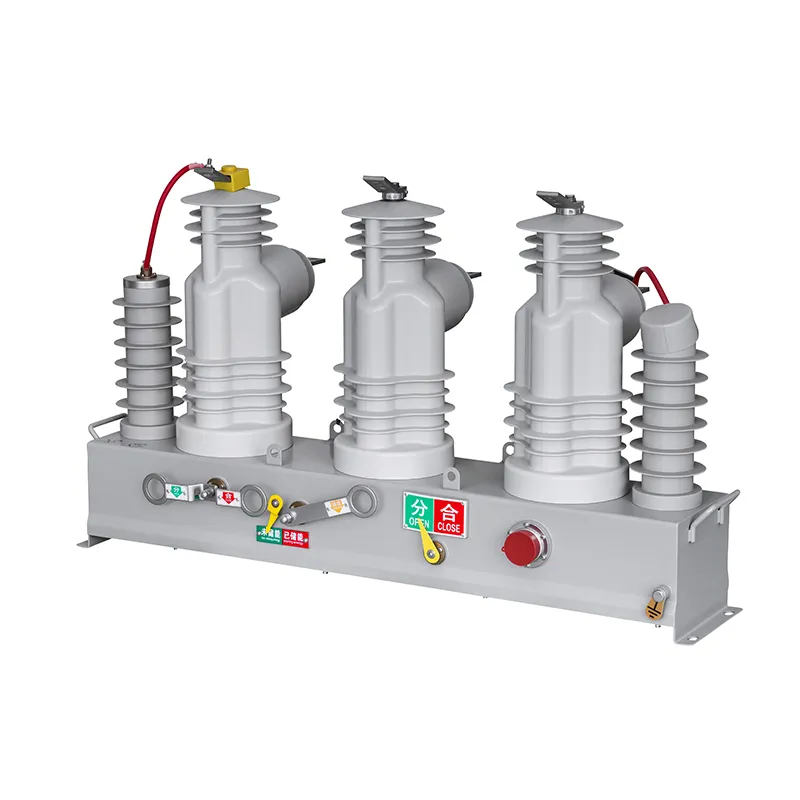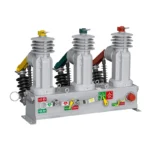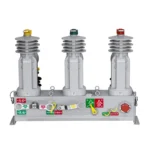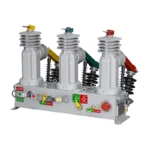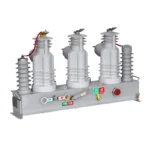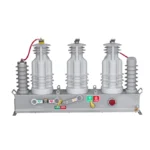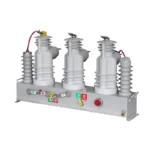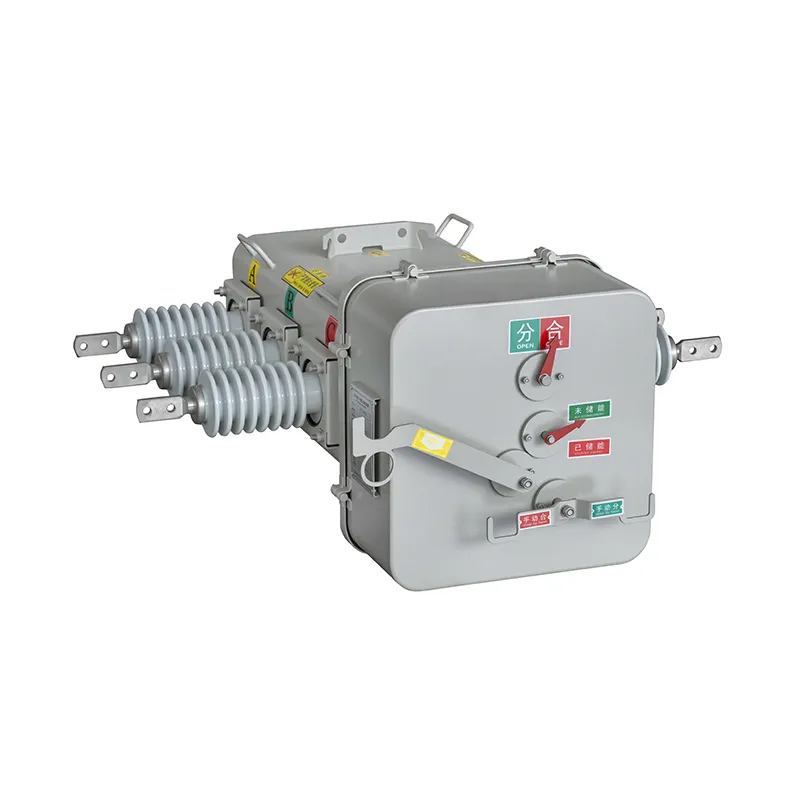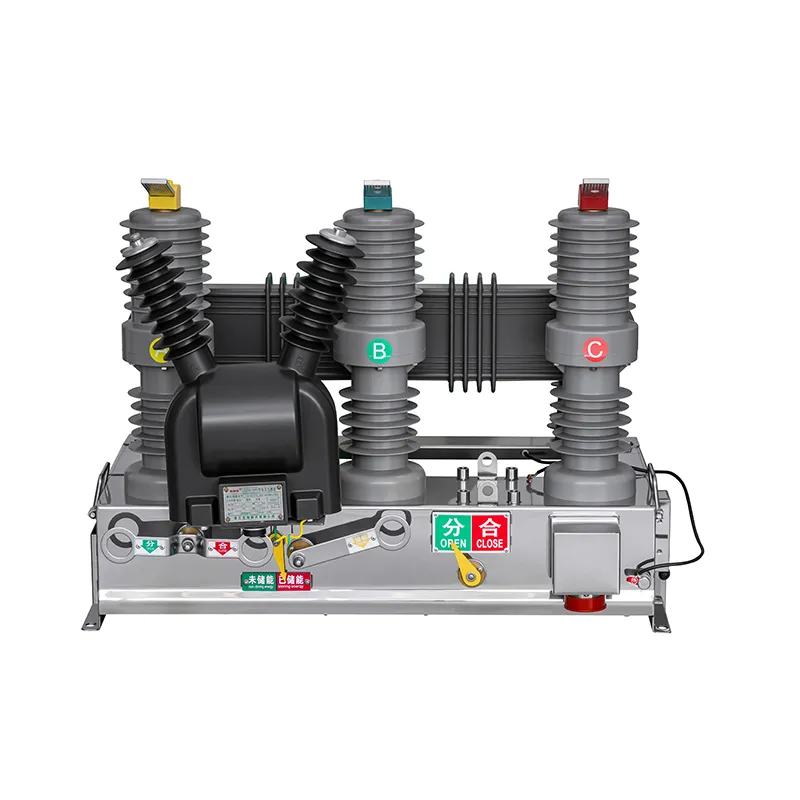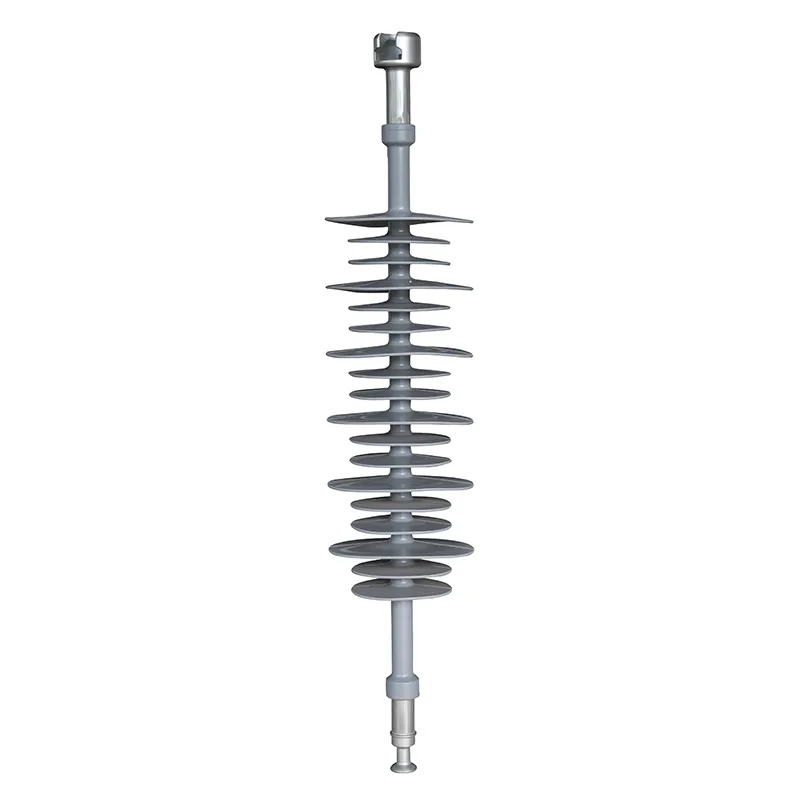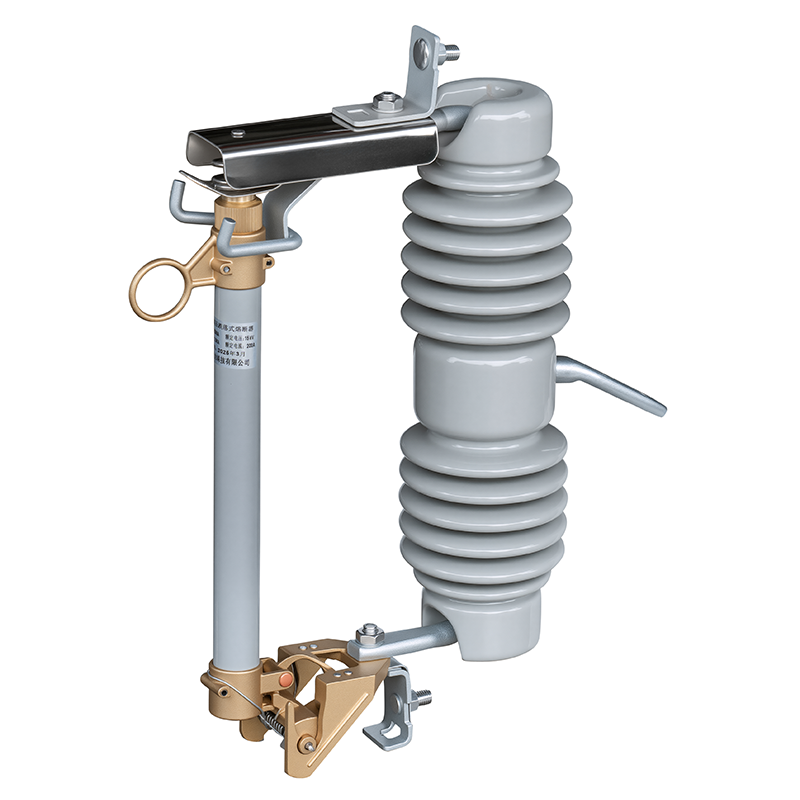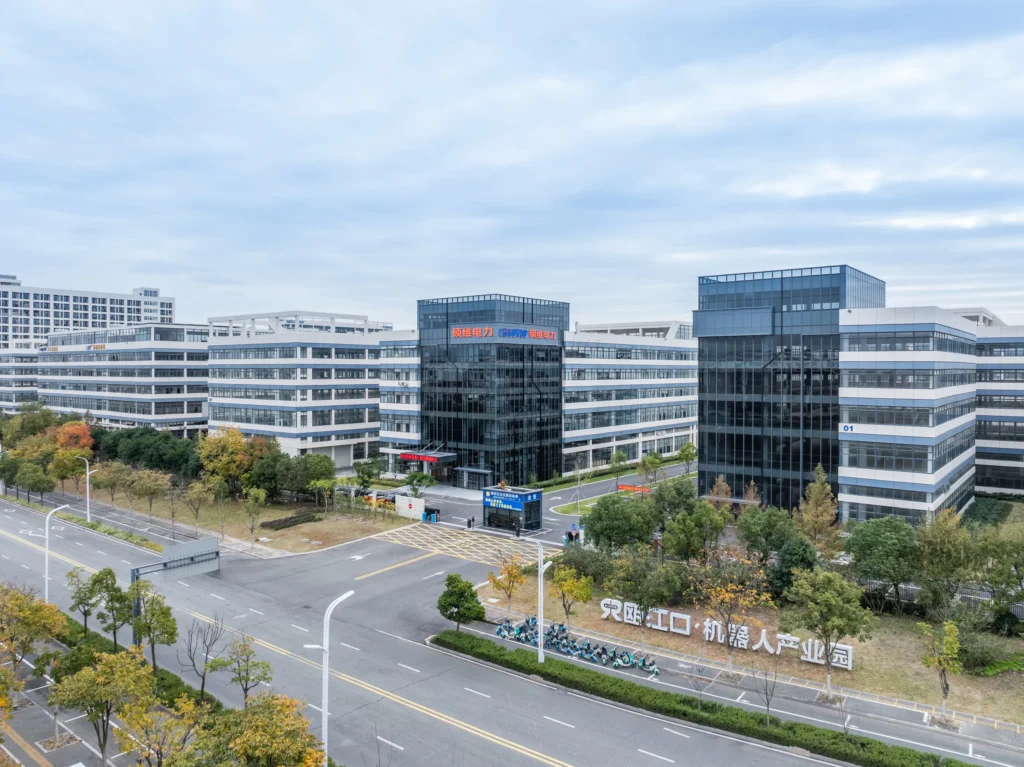Description
The Fully Integrated Primary & Secondary Pole-Mounted Vacuum Circuit Breaker combines the primary switching components (such as contacts, interrupter, and insulation) with secondary devices (such as protection, measurement, and communication modules) into a single intelligent unit.
It is mainly used in overhead distribution networks for sectionalizing, interconnection, and protection, enabling fast fault isolation and improved supply reliability and automation.
2. Key Features
-
Highly Integrated – Reduces wiring and interfaces between primary and secondary devices, improving reliability and reducing failure rates.
-
Smart Functions – Offers protection, measurement, control, and communication, supporting remote monitoring, fault location, and auto-reclosing.
-
High Reliability – Excellent arc-extinguishing, insulation, and mechanical performance, suitable for harsh outdoor conditions.
-
Easy Installation & Maintenance – Compact, lightweight design, self-diagnosis, and fault warning functions to lower maintenance costs.
3. Technical Specifications
-
Rated Voltage: Typically 10kV, 20kV (customizable)
-
Rated Current: 630A, 1250A
-
Rated Short-Circuit Breaking Current: 12.5kA, 16kA, 20kA
-
Rated Short-Circuit Making Current: ~2.5× breaking current
-
Operating Mechanism: Spring or permanent magnet type
-
Mechanical Life: ≥10,000 operations
-
Protection Level: IP65 or higher
-
Communication Interfaces: RS485, Ethernet, wireless options
4. Structure
-
Primary Equipment: Switch body, contacts, interrupter (vacuum or SF₆), insulating supports, current transformers.
-
Secondary Equipment: Protection & control unit, communication module, power supply module.
5. Installation & Commissioning
-
Install in a dry, elevated, and well-ventilated location.
-
Mount securely on the pole structure, ensuring proper alignment.
-
Connect primary circuits and secondary wiring as per diagrams.
-
Perform insulation resistance and withstand voltage tests, protection function checks, communication setup, and open/close operation tests.
6. Operation
-
Manual: Via handle on-site (with power off).
-
Remote: Through SCADA or automation master station.
-
Auto-Reclosing: Configurable delay for transient fault recovery.
7. Maintenance & Troubleshooting
-
Routine: Clean surfaces, tighten bolts, check indicators.
-
Periodic: Inspect and test both primary and secondary components every 1–2 years.
-
Troubleshooting: Address issues in switching, protection, or communication by inspecting mechanisms, wiring, and settings.
8. Transport & Storage
-
Use proper lifting and protection during transport.
-
Store upright in dry, ventilated areas with controlled temperature/humidity.
Request a Quote Now
Our team will get back to you within 24 hours.

